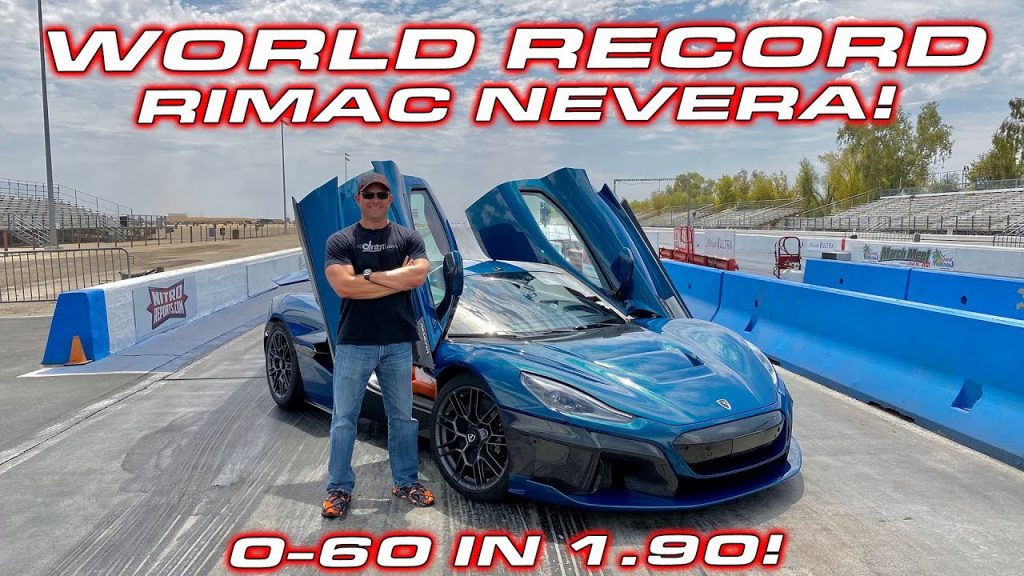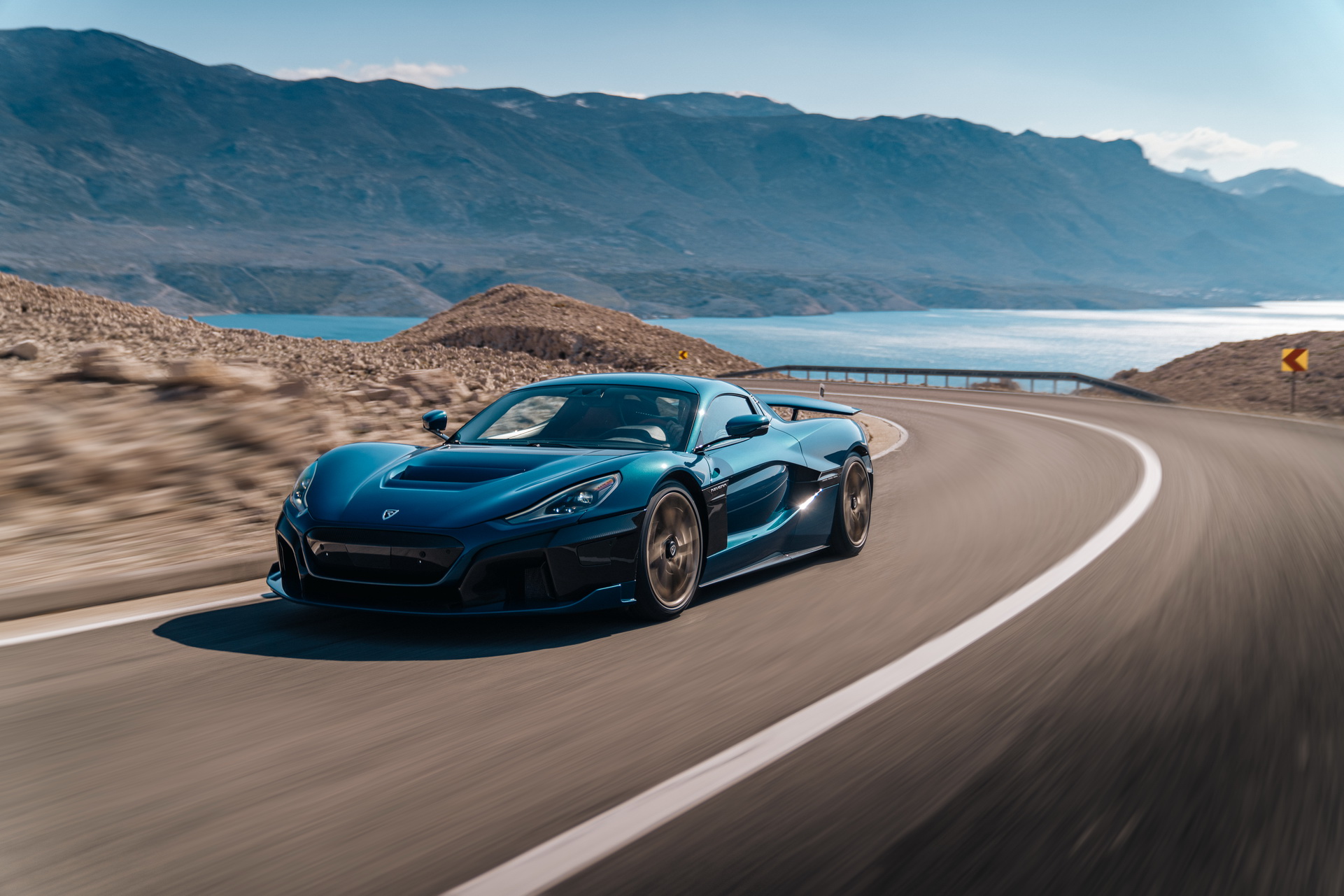For a company that was on the brink of collapse within days after its debut back in 2011, Rimac has managed to power through adversity and has given the world an EV hypercar that just won’t stop itself from going faster.
While the claim of the Nevera being the world’s fastest production car has been made before, the Nevera — making its U.S. Debut as part of the Monterey Car Week — has set its fastest time yet. With Brooks Weisblat from DragTimes behind the wheel, the Croatian hypercar set what Rimac are calling a “quarter-mile in a production car world record” time of 8.582 seconds with an exit speed of at a top speed of 167.51mph (269.58 km/h). The company said the run was the “11th of the day in quick succession, without any performance degradation between the runs”.
It Beat Its Own Previous Record
This indeed betters a time of 8.62 seconds recorded during a video for Carwow earlier this year. The relatively new company to the automotive arena, who were recently announced as partners for Bugatti, says that this makes the Nevera the quickest accelerating production car in the world, with both the officials of the Famoso Raceway and the experts from DragTimes present.
But Is It Official?
However, although Rimac stated in an official release that the times set “can be independently verified by third parties.” it’s unclear if they have been yet. CarScoops has reached out to the company for a comment.
Nevertheless, the timings are impressive, to say the least. In fact, if the fastest run alone wasn’t impressive enough, the parameters in which it was set go even further. Firstly, the Nevera in question was wearing the same factory-spec, roadgoing Michelin Pilot Sport 4S tires.
Secondly, the fastest trip down the strip was set after several hard launches and quick runs, demonstrating the repeatability that the Rimac’s hardware and tech can withstand.
The fast time also came thanks to the experience of DragTimes’ Brooks Weisblat. “Brooks helped with his experience of staging the car and we managed to set the world record for the fastest accelerating production car and also beat our own quarter-mile record,” said Miroslav Zrnčević, Test and Development Driver for Rimac. “Still, we are confident that the Nevera has much more to give and that we can go even quicker with more experience and testing on this kind of surface. We will be back.”
Also See: 2022 Rimac Nevera Sets Unofficial Quarter Mile Record
The Nevera is equipped with a 120 kWh battery, which is also the largest battery pack fitted to any production EV. It features four motors that can individually vector torque to each wheel, with the onboard wizardry able to adjust torque sent 100 times per second. With a dedicated dial on the dash, you can split the amount of torque you want to send to each axle. This is especially useful for staging, as seen in this video, as well as sending all the torque to the rear in drift mode.
Read: Yes, Rimac’s Nevera Is Faster Than An SF90 Off The Line, But Will It Drift?
You don’t quite have to be a driving god to look good behind the wheel of a Rimac though, as tester Zrnčević explains, the mode monitors the angle of drift, preventing you from spinning so easily — understandable with all that power and torque on tap.
Featuring extensive carbon fiber construction, which sees only the crash structures made of metal, the Nevera holds the record of having the largest carbon fiber monocoque chassis in the world. The chassis is also exceptionally stiff, exhibiting rigidity of three times that found on a LeMans racecar.
What Powers This Electric Beast
The Nevera features 1914 hp (1940 PS / 1427 kW) and 2360 Nm (1740 lb-ft) of torque. The Rimac can rocket from 0-60 mph (0-96 km/h) in a claimed 1.85 seconds, while it’s good for a range of 340 miles (547 km) — impressive for a supercar. But it’s not light. At 2,150 kg (4,740 lbs.), the Rimac is some 155 kg (340 lbs.) heavier than a Bugatti Chiron.










